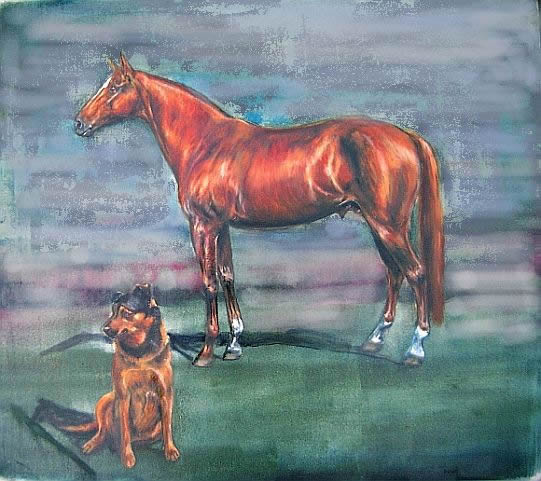
"What acrylic colors do I have to mix to achieve a nice chestnut color horse?" -- Perola
A horse's coat has a depth and glow to it that's best painted by glazing, building up the color through multiple layers, rather than premixing colors and applying a single layer of paint. Whether you're using acrylics, oils, or watercolor, the colors will be the same.
Artist Patricia Vaz Dias who is known for her paintings of horses and dogs, says she "always uses a sap green underpainting under golden, orangey or reddish browns as it livens up the color amazingly." For middle tones use "burnt sienna, sand color, or ochre". How these are mixed depends on the type of chestnut horse. If it's very red-brown, then add a bit of bright red. If it's more golden, add raw umber. In the darkest shades, add a bit of indigo blue and burnt umber, and for the lightest parts "ochre and titanium white, or light ochre if the horse is really golden".
Artist Susan Tschantz says a chestnut horse "has a deep richness, that is a combination of hues. There is the dark brown of course, but there are definite red overtones which is best done by building up layers of semi-transparent colors." Start with a raw umber underpainting to establish the darks and shapes, then build up with some burnt umber, use either an alizarin crimson or if a bright sunny day, a cadmium red. "Try mixing these with either the raw or burnt umber, or if the horse has a more definite reddish cast, a raw sienna."
As always when painting a new subject, do some color studies before doing it "for real". Make notes of what you've used so you can do it again. It'll save you time and frustration when working on the final painting.
• Step-by-Step Chestnut Horse Painting Demo by Patricia Vaz Dias
